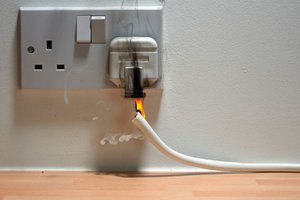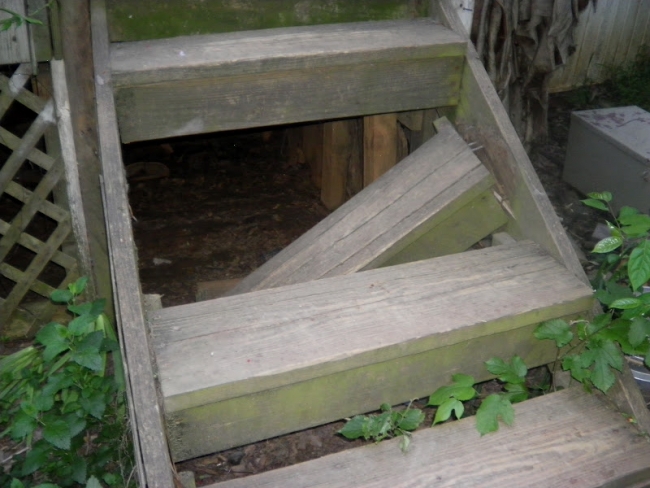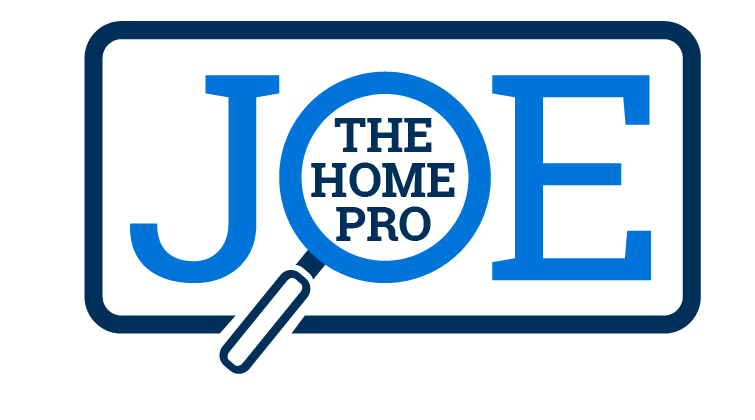
If I am doing an inspection for a home-buying client and I uncover a defect that, in my opinion, is hazardous or someone could get seriously hurt, do I have a duty to warn not just the client, but also the occupants, real estate professional, and the owner of the property?
Many inspectors consider it their ethical and even moral duty to disclose to all relevant parties any imminent hazards they discover in the course of an inspection. But inspectors don’t bear this burden alone. The obligation of disclosure also falls to the property owner.
The Homeowners’ Duty to Warn
The homeowner’s obligation to warn others of any known dangers or hazards on the property covers invited guests, licensees (such as home inspectors and other professionals who are allowed onto the property to perform specific functions, with the homeowner’s permission), and, in some cases, even trespassers. The precedent for such disclosure is found in civil law and is called “the duty to warn.” The duty to warn says that a party—the homeowner—will be held financially liable for injuries caused to another, given that the homeowner had the opportunity to warn the other party of a known hazard but failed to do so. Such hazards may be hidden from visitors but known to the homeowner or occupant, and may or may not be the result of negligence. The duty to warn certain parties about known hazards can range from a deadly condition (such as a gas leak) or they may encompass all known hazards. The law makes distinctions between licensees, invitees and trespassers in order to determine the plaintiff’s legal standing, the owner or occupant’s level of liability, and the limits on damages awarded to the injured party.
As with all civil law, and even some criminal law, it is the individual state’s precedents and statutes that determine the obligations of and potential consequences for the homeowner. For example, many states do not enforce a duty on owners or occupants to warn trespassers of any potential dangers on the property, while others, such as California, enforce a “reasonable duty of care” toward any person who enters a property. As an example, a rural property owner who sets animal traps for pesky prairie dogs may be required to post signs warning trespassers of the danger.
It’s important for homeowners to know that they have a legal obligation to maintain a safe property for all invitees, and this includes having performed an inspection--personally or hired out--to discover any hidden hazards, whether or not a property transaction is involved.
The Seller’s Disclosure
The duty to warn and a seller’s disclosure address different legal concerns but the types of potential hazards they cover can overlap considerably. While a duty to warn is designed to prevent physical injury (and subsequent legal action and damages), a seller’s disclosure is designed primarily to address a home’s value, both its selling price and its resale value.
There are six general categories that should be included in all seller’s disclosures, as they can significantly affect a home’s price:
- termite/wood-destroying organism infestation
- mold and/or damage due to moisture intrusion
- lead-based paint
- natural hazards
- general repairs
- infamous or notorious past
Again, these disclosures cover items that the homeowner/seller either knows about or should know about, and the breadth of these categories may vary by state.
- Most homes have some evidence of mold, but the level of moisture intrusion—whether past or active—can mean the difference between a smooth home sale and a costly lawsuit after the fact. Most moisture intrusion is easy to spot, such as a leaky roof, a musty-smelling basement, or bubbling paint on damp drywall. Unfortunately, many home sellers whose homes have serious water-intrusion problems attempt to hide them, as this is the Number One reason new homeowners sue their homes’ former owners.
- Homes in the U.S. built before 1978—before lead-based paint and related products were outlawed—may have lead paint at the exterior, interior, or both. According to the Environmental Protection Agency, lead that is not disturbed does not pose a serious hazard, but in households with small children, who may explore and ingest old and chipped paint, lead can be a serious health hazard that can result in severe, long-term neurological damage. Sellers of older homes are required to disclose any known lead-based paint in the home, as well as extend the prospective buyer a 10-day window to test the home for the presence of lead. The failure to disclose the known presence of lead that results in a lawsuit can trigger an automatic award of treble damages.
- Natural hazards cover homes located in floodplains, along earthquake faults, and similar natural dangers. This disclosure is designed primarily to give prospective buyers the heads-up for the need to obtain appropriate additional homeowners insurance coverage or specific riders.
- General repairs is the broadest category of disclosure and is meant to include major repairs and unique maintenance to a home’s major systems and components, as well as structural fixes, including those required because of weather-related damage and moisture intrusion. While this category may result in litigation determined on a case-by-case basis, the general rule here is that if you would want to know about it as a home buyer, you should disclose it as a seller.
- Not all states have laws regarding a home’s infamous past, but if some previous undisclosed activity or history significantly lowers a home’s resale value (or jeopardizes its ability to be resold), a lawsuit may be the only way that a seller can recover on a poor investment. This category ranges from a home thought to be haunted, to a home where a murder was committed, and the more prevalent problem of a home used to manufacture methamphetamine. This last type of home poses more of a physical danger than one of notoriety, since the chemicals used to manufacture meth can permeate structural components and remain permanently, which can lead to severe neurological, respiratory and other health hazards for a home’s future occupants.
A Seller’s Inspection
I have performed numerous inspections for clients who are selling their home, even prior to listing it for sale. I am Move-In Certified™ and can help sellers see what needs to be fixed before they go to sell. Sellers can then take the time they need to obtain reasonable repair estimates to address defects so that they don’t become stumbling blocks later. A seller’s inspection is also a demonstration to prospective buyers that the seller is dealing in good faith and is interested in providing full disclosure as to the home’s condition, including repairs already performed as a result of an earlier seller’s inspection. It has the added advantage of helping the seller obtain his asking price.
The Home Inspector’s Duty
An Inspector should bear in mind that they serve as a licensee of the homeowner when it comes to their own duty to warn. If there is an imminent danger or hazard that can cause physical injury, the obligation to warn those who may be harmed outweighs any confidentiality they owe their client.
While the inspection report is the bargained-for product between the inspector and the client, and while the report and contract may contain confidential information whose disclosure to other parties may require prior permission by the client, your state may dictate that you warn all visitors of known hazards and dangers discovered on a property, irrespective of the client’s right to privacy and confidentiality.
InterNACHI's own Home Inspector Code of Ethics provides for the notification all relevant parties--not just the client--of an imminent danger or hazard:
I. Duty to the Public [...] 7. The InterNACHI member shall not communicate any information about an inspection to anyone except the client without the prior written consent of the client, except where it may affect the safety of others or violates a law or statute. [...]

The following hazards as those that I would immediately report, regardless of the party: the risk of carbon-monoxide poisoning (perhaps due to an inoperative detector or a potential problem with the door separating an attached garage and the living space); the lack of a temperature/pressure-relief valve on a hot water heater or furnace, which can result in a deadly explosion; and other hazards that pose an immediate risk of injury. Of course, not all defects qualify as imminent dangers, and all identified but unaddressed defects require that occupants exercise reasonable care, such as when going up and down a staircase that lacks a required handrail on at least one side.
This is taken directly from the International Association of Certified Home Inspectors (InterNACHI):
If an Inspector discovers a condition that, in his/her judgment, presents a risk of imminent harm, Client agrees that Inspector may disclose that condition to the Seller or such other third parties as Inspector deems appropriate.

